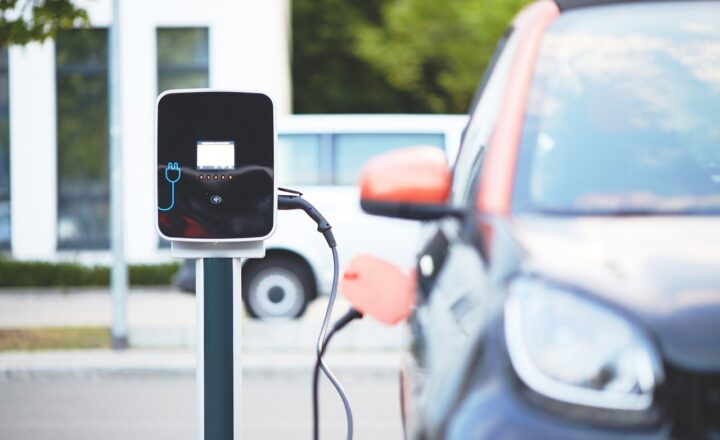
As we venture into an era steeped in innovation, the automotive industry stands at the forefront of transformative change. With rapid advancements in technology, future car technologies are set to redefine not only how we drive but how we perceive mobility altogether. This article delves into groundbreaking innovations—ranging from autonomous vehicles to connected car technologies—that promise to revolutionize our driving experiences and reshape entire cities.
1. Autonomous Vehicles: Driving Without Hands
The pinnacle of modern automotive technology lies in autonomous vehicles, often referred to as self-driving cars. These vehicles are equipped with complex algorithms, sensors, and artificial intelligence (AI) that allow them to navigate and make decisions independently. In the not-so-distant future, the prevalence of autonomous vehicles will drastically alter the dynamics of road safety and urban planning.
1.1 The Levels of Autonomy
Autonomous vehicles are categorized into six levels, from Level 0 (no automation) to Level 5 (full automation). Most autonomous car technologies deployed today operate at Level 2—partial automation, which still requires human oversight. However, the ultimate goal is to achieve Level 5, where the vehicle manages all driving tasks without human intervention.
1.2 Safety and Efficiency
Studies suggest that autonomous vehicles could significantly reduce traffic accidents, given that most accidents arise from human error. Moreover, these vehicles could optimize routes, decrease congestion, and enhance overall traffic flow.
2. Electric and Hybrid Vehicles: A Greener Future
The shift from traditional internal combustion engines to electric and hybrid systems is reshaping the automotive landscape. With growing environmental awareness, the demand for sustainable and eco-friendly vehicles is skyrocketing.
2.1 The Rise of Electric Vehicles (EVs)
Electric vehicles are designed to operate solely on electric power. Major manufacturers like Tesla, Nissan, and Chevy are leading the charge, providing consumers with efficient options that have zero tailpipe emissions.
2.2 Hybrid Technology: The Best of Both Worlds
Hybrid vehicles combine gasoline engines with electric powertrains, enhancing fuel efficiency while reducing emissions. This technology promises a smoother transition for consumers reluctant to abandon traditional fuel sources entirely.
3. Connected Car Technologies: The Internet on Wheels
Connected cars utilize internet connectivity to enable communication with external devices, creating an integrated driving experience. This connectivity opens avenues for numerous applications that can elevate safety and convenience.
3.1 Vehicle-to-Everything (V2X) Communication
V2X encompasses communication between vehicles, infrastructure, and other road users. This technology enables cars to transmit data about road conditions, traffic, and hazards, helping drivers make informed decisions and improving overall traffic management.
3.2 Enhanced Infotainment Systems
Modern vehicles are equipped with advanced infotainment systems that offer voice recognition, navigation, and smartphone integration. These systems not only keep drivers connected but also offer entertainment options, making travel more enjoyable.
4. Advanced Safety Features: Driving Towards Zero Accidents
Technological advancements are increasingly focusing on enhancing vehicle safety through innovative features. These developments aim to significantly reduce accidents and fatalities on the road.
4.1 Adaptive Cruise Control and Lane Keeping Assist
Many modern vehicles come equipped with advanced cruise control systems that automatically adjust speed based on surrounding traffic. Lane Keeping Assist actively helps drivers maintain their lane by providing steering inputs, reducing the chances of unintentional lane departure.
4.2 Automatic Emergency Braking (AEB)
AEB systems utilize sensors to detect potential collisions and automatically apply brakes if the driver fails to respond promptly. This feature is proving invaluable in preventing rear-end accidents and protecting pedestrians.
5. Augmented Reality (AR) Dashboards: A New Way to Visualize Driving
Imagine a dashboard that overlays critical driving information directly onto your field of vision, enhancing your situational awareness while maintaining focus on the road. AR dashboards are paving the way for a new driving experience.
5.1 Heads-Up Displays (HUD)
HUDs project vital information—like speed, directions, and vehicle alerts—onto the windshield, ensuring drivers can access essential data without taking their eyes off the road. This innovation promises to aid in decision-making and promote safer driving habits.
Conclusion: The Road Ahead
The future of driving is undeniably exciting, filled with innovations that promise to enhance safety, increase efficiency, and provide environmentally friendly options. As technologies such as autonomous driving, connectivity, and advanced safety features continue to evolve, we will experience unprecedented changes in how we engage with our vehicles. As we move forward, it is imperative to balance technological advancements with ethical considerations and regulatory frameworks, ensuring a future that is safe and accessible for all.
In conclusion, the journey into tomorrow’s automotive landscape is just beginning, and each innovation brings us closer to a world of smarter, safer, and more sustainable driving.






